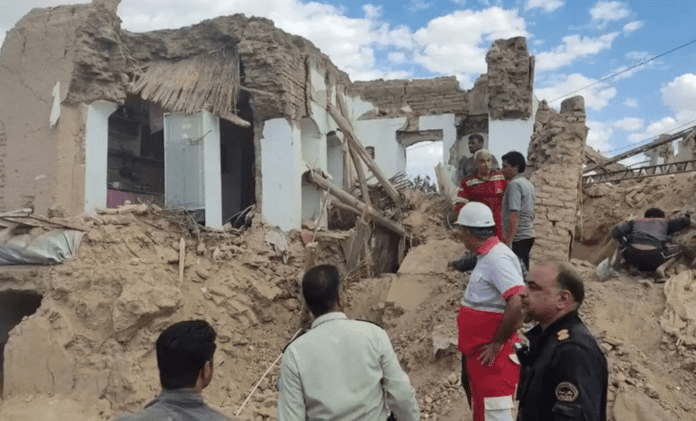Iran’s Ongoing Efforts in Disaster Preparedness: Recent Kashmir Earthquake Leaves Four Dead and 120 Injured.
In ShortImpact: A 4.9 magnitude earthquake hit Kashmar, Iran, causing extensive damage, with four deaths and 120 injuries reported, mainly affecting older buildings. Historical Context: Iran, prone to seismic activity due to its location on tectonic plates, has a history of devastating earthquakes, including the 2003 Bam quake. Response and Preparedness: Iran has implemented measures like retrofitting buildings and improving early warning systems to enhance disaster readiness and minimize future earthquake impacts. |
On Tuesday, Iran’s northeastern city of Kashmir was jolted by a 4.9 magnitude earthquake, leaving a trail of devastation with at least four fatalities and 120 injuries, as reported by state media. The seismic event struck at 1:24 pm local time (0954 GMT), wreaking havoc on both urban and rural areas, particularly impacting older structures that bore the brunt of the tremors.
Governor Hajatollah Shariatmadari, speaking on state television, provided grim casualty figures, noting that 35 individuals had been hospitalized due to injuries sustained during the earthquake. Dramatic footage aired by state channels painted a stark picture of the aftermath, showcasing rescue teams painstakingly navigating through mounds of debris that once formed bustling streets and homes.
ALSO READ: Empire State Building Stands Strong: ‘I Am Fine’ After New York Shaken by 4.8 Magnitude Earthquake.
According to the United States Geological Survey, the earthquake originated at a depth of 10 kilometers (approximately six miles). Iran, situated atop multiple tectonic plates, is no stranger to seismic activity, making earthquakes an all-too-frequent natural hazard.
The recent tremor in Kashmir draws poignant parallels with past seismic tragedies in Iran’s history. Just last year, a 5.9 magnitude earthquake in the country’s rugged northwest claimed three lives and injured over 800 people, primarily affecting regions near the Turkish border. However, one of the most haunting episodes remains the catastrophic 2003 earthquake in Bam, where a 6.6 magnitude quake razed entire neighborhoods, claiming the lives of more than 31,000 people in the southeastern city.
In response to these recurrent disasters, Iran has undertaken extensive measures to fortify its resilience against earthquakes. Initiatives include retrofitting older buildings to withstand seismic shocks and bolstering early warning systems to provide vital seconds for evacuation and response efforts.
As rescue and relief operations persist in Kashmir, authorities underscore the critical importance of community preparedness and solidarity in confronting Iran’s enduring vulnerability to seismic disturbances. The ongoing efforts reflect a commitment to mitigating the impact of future earthquakes and safeguarding lives in the face of natural adversity.

